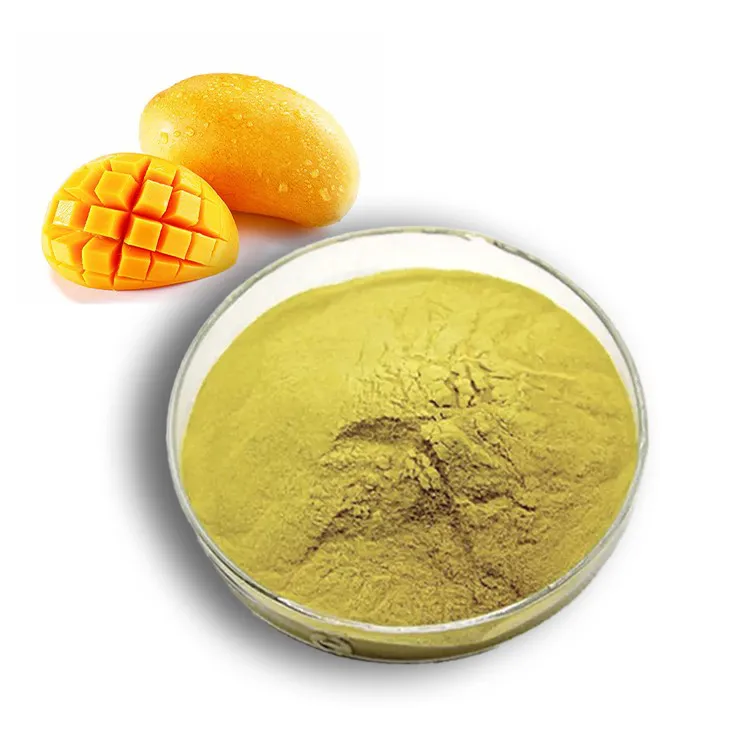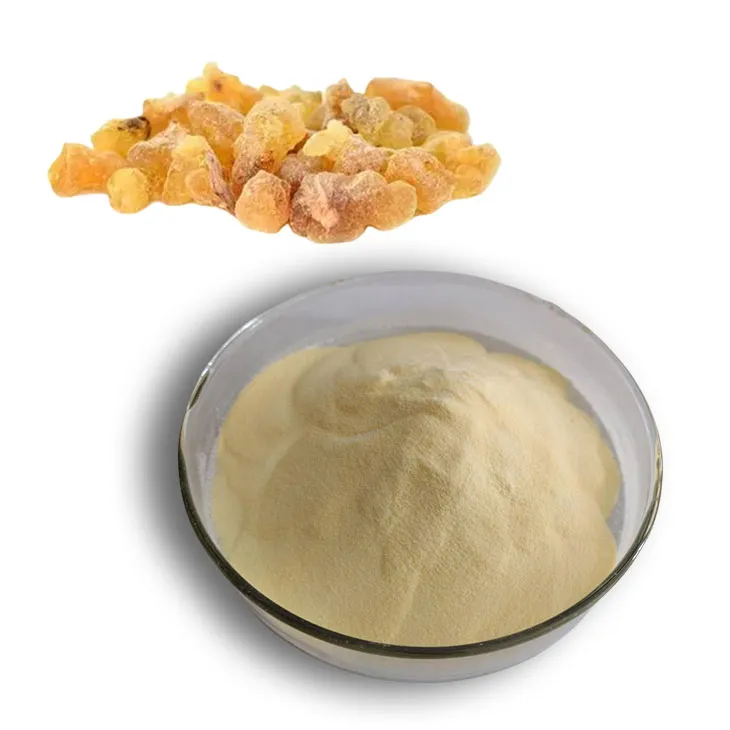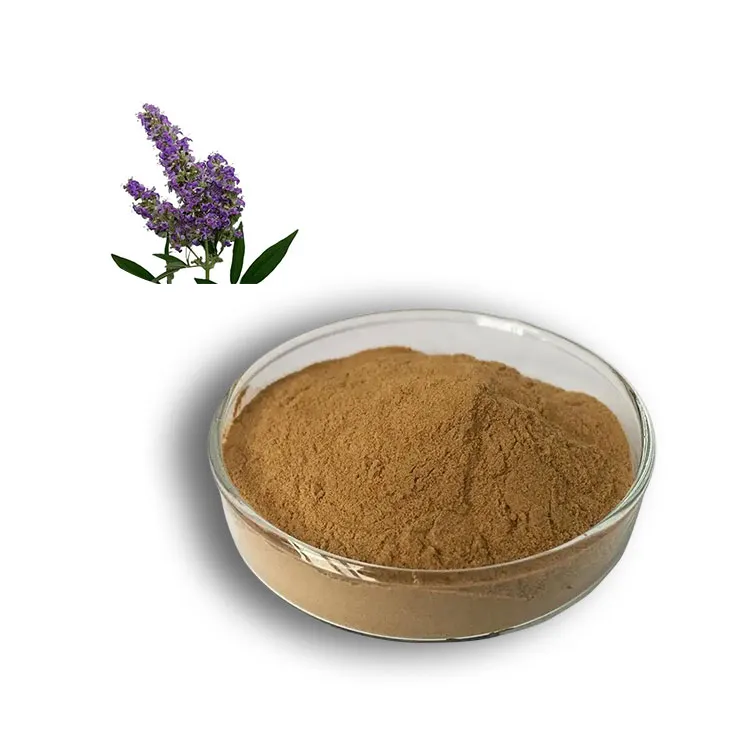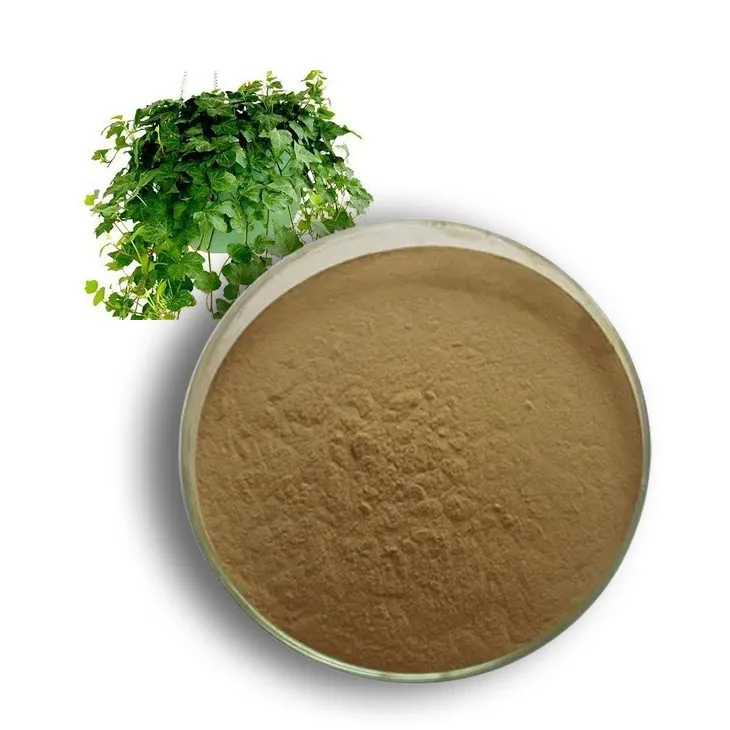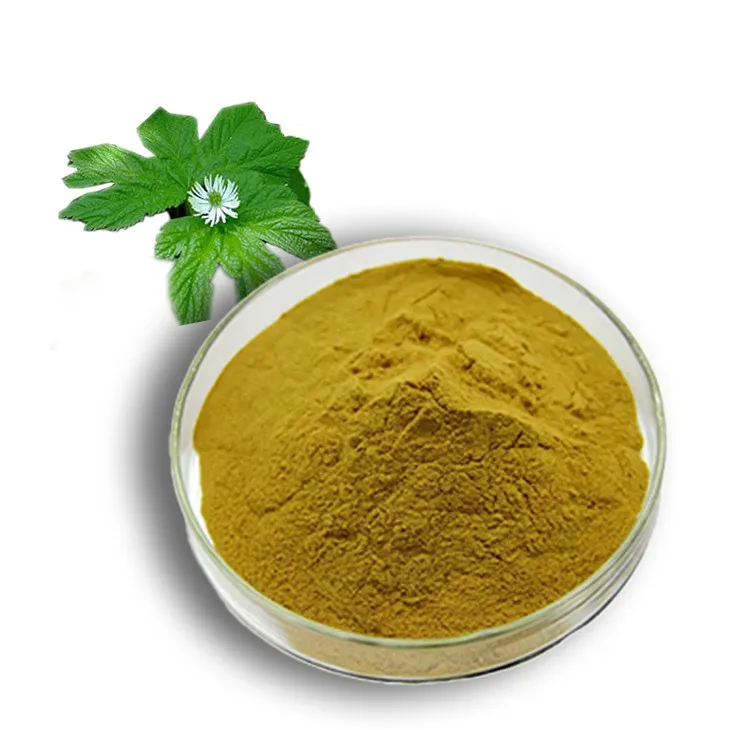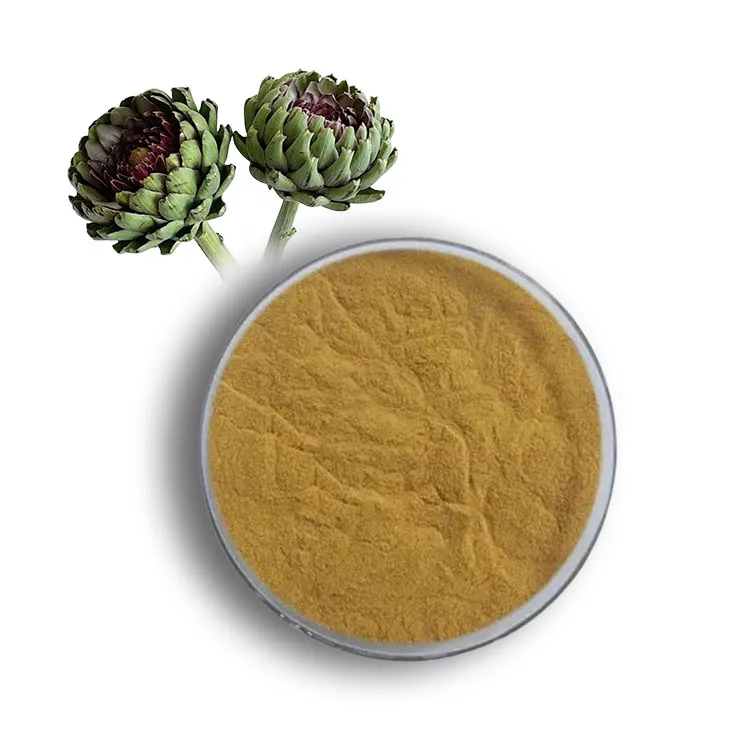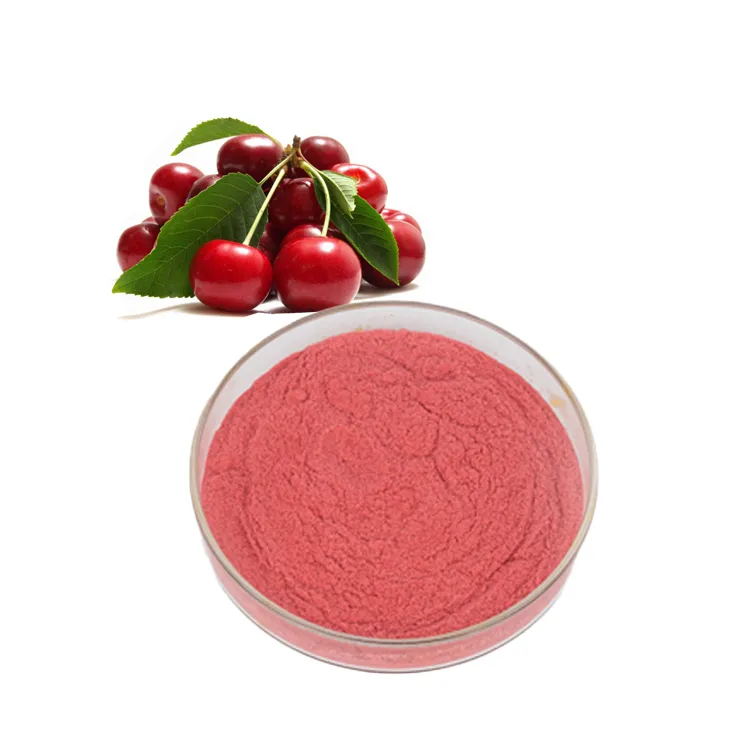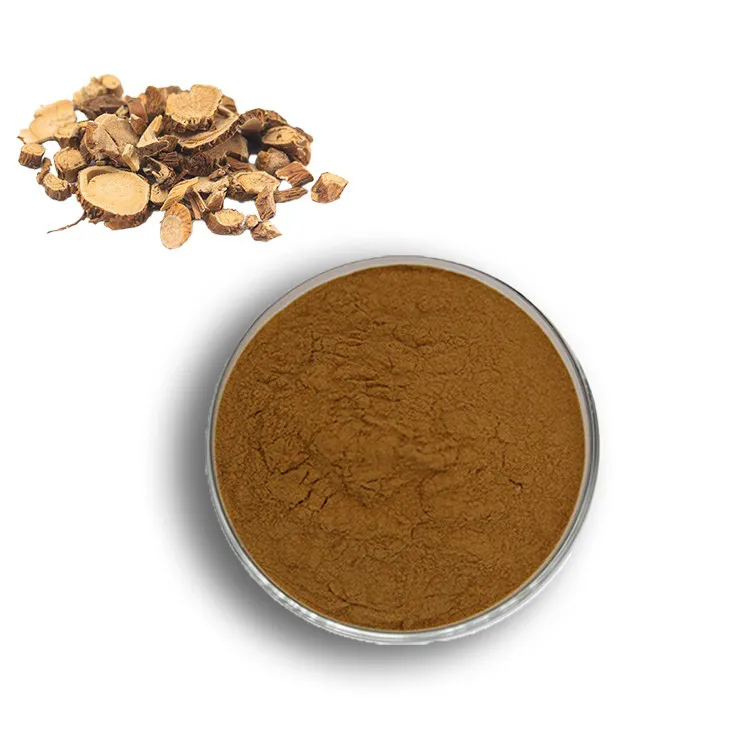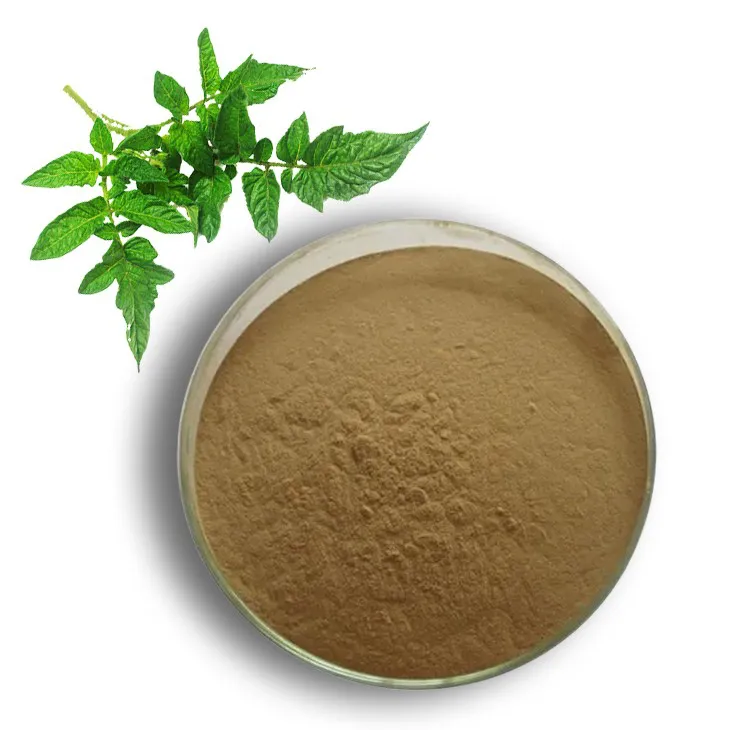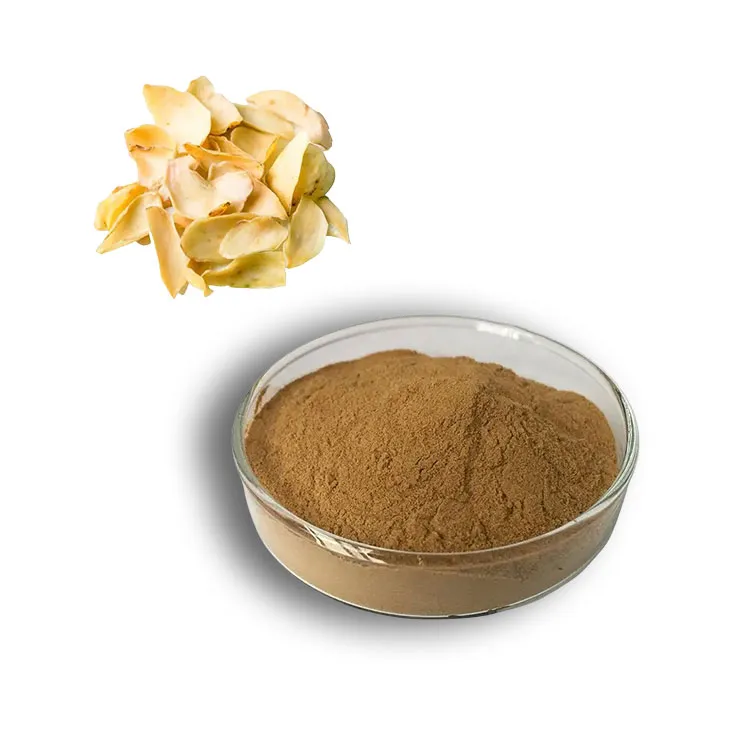- 0086-571-85302990
- sales@greenskybio.com
Organic Paeonia lactiflora Pall. extract of trace components.
2024-11-30
1. Introduction to Paeonia lactiflora Pall.
Paeonia lactiflora Pall., also known as the Chinese peony, is a well - known plant in traditional Chinese
medicine. It is a perennial herbaceous plant that is native to China and has been cultivated for centuries. The
plant has large, showy flowers that range in color from white to pink, which not only add to its aesthetic
value but also make it easily recognizable.
In traditional Chinese medicine, different parts of Paeonia lactiflora Pall. have been used for various
medicinal purposes. For example, its roots are often the main part used in herbal preparations. It is believed
to have properties such as soothing pain, regulating menstruation, and nourishing the blood. This long -
standing use in traditional medicine has drawn the attention of modern researchers, who are now exploring its
potential in a wider range of applications.
2. The Trace Components in the Organic Extract
The organic extract of Paeonia lactiflora Pall. contains a complex mixture of components, among which the
trace components play a crucial role. These trace components are present in relatively small amounts but
can have a significant impact on the overall properties of the extract.
Chemical analysis has revealed the presence of various types of trace components in the extract. These include
certain flavonoids, phenolic acids, and terpenoids, which are known for their antioxidant, anti - inflammatory,
and other bioactive properties. For instance, some flavonoids in the trace components have been shown to
scavenge free radicals effectively, which can help protect cells from oxidative damage.
3. Significance of Trace Components in Relation to the Extract's Overall Properties
3.1 Synergistic Effects
The trace components in the Paeonia lactiflora Pall. extract often work in synergy with the major components.
They can enhance the overall bioactivity of the extract. For example, when combined with the main active
ingredients, the trace flavonoids can boost the anti - inflammatory effect. This synergy is crucial as it allows
the extract to have a more comprehensive and potent impact on various physiological processes.
3.2 Unique Properties
Some trace components possess unique properties that are not shared by the major components. These unique
properties can contribute to the distinctiveness of the Paeonia lactiflora Pall. extract. For instance, certain
terpenoids in the trace components may have a specific aroma or taste, which can be important in applications
such as in the food and cosmetics industries.
4. Applications in the Medicine Industry
4.1 Anti - inflammatory and Analgesic Effects
In the medicine industry, the Paeonia lactiflora Pall. extract with its trace components has shown great
potential in treating inflammatory diseases and relieving pain. The combined action of the various components,
including the trace ones, can target different aspects of the inflammatory pathway. For example, in pre -
clinical studies, it has been observed that the extract can reduce the production of inflammatory cytokines,
thus alleviating inflammation and associated pain.
4.2 Cardiovascular Health
There is also evidence suggesting that the extract may have a positive impact on cardiovascular health. The
antioxidant properties of the trace components, such as flavonoids, can help prevent oxidative stress in the
cardiovascular system. This can reduce the risk of developing heart diseases, such as atherosclerosis, by
protecting the blood vessels from damage.
4.3 Neuroprotective Effects
Some research has indicated that the Paeonia lactiflora Pall. extract may have neuroprotective effects. The
trace components may play a role in protecting neurons from damage caused by factors such as oxidative stress
and inflammation. This could potentially be useful in the treatment or prevention of neurodegenerative
diseases, although more research is needed in this area.
5. Applications in the Cosmetics Industry
5.1 Skin Whitening and Anti - aging
In the cosmetics industry, the Paeonia lactiflora Pall. extract is highly valued. The trace components, such as
certain phenolic acids, may have skin - whitening effects. They can inhibit the production of melanin, which is
responsible for skin pigmentation. Additionally, the antioxidant properties of the extract can help combat
skin aging by reducing oxidative damage to the skin cells. This can result in smoother, more youthful - looking
skin.
5.2 Skin Moisturizing
Some components in the extract, including trace ones, can also help improve skin moisturizing. They can enhance
the skin's barrier function, preventing water loss from the skin. This is important for maintaining healthy,
hydrated skin, especially in dry or harsh environmental conditions.
6. Applications in the Food Industry
6.1 Flavor and Aroma Enhancement
In the food industry, the Paeonia lactiflora Pall. extract can be used to enhance flavor and aroma. The unique
terpenoids and other trace components in the extract can impart a pleasant floral or herbal note to food and
beverages. This can be used in the development of new food products, such as flavored teas or desserts.
6.2 Nutritional Additives
Given its potential health - promoting properties, the extract can also be considered as a nutritional additive.
The antioxidant and anti - inflammatory properties of the trace components can add value to food products. For
example, it could be added to functional foods or dietary supplements.
7. Challenges in the Research and Development of the Extract
7.1 Complexity of Composition
One of the major challenges in the research and development of the Paeonia lactiflora Pall. extract is the
complexity of its composition. The presence of numerous components, especially the trace components, makes it
difficult to fully understand the mechanisms of action. Isolating and characterizing each component is a
labor - intensive and time - consuming process.
7.2 Standardization
Another challenge is the standardization of the extract. Due to the variability in the plant's growth conditions
and extraction methods, it is difficult to produce a consistent product. This can pose problems in terms of
quality control and regulatory compliance in the various industries where the extract is used.
7.3 Safety and Toxicity Evaluation
Although Paeonia lactiflora Pall. has a long history of use in traditional medicine, a comprehensive safety
and toxicity evaluation of the extract, especially considering the trace components, is still needed. This is
important to ensure its safe use in modern applications, especially in the food and cosmetics industries
where strict safety regulations apply.
8. Opportunities in the Research and Development of the Extract
8.1 Advanced Analytical Techniques
With the development of advanced analytical techniques, such as high - performance liquid chromatography - mass
spectrometry (HPLC - MS), there are greater opportunities to study the trace components of the Paeonia
lactiflora Pall. extract in more detail. These techniques can help in the accurate identification and
quantification of the components, which is crucial for understanding their functions and potential
applications.
8.2 Biotechnology and Genetic Engineering
Biotechnology and genetic engineering offer new opportunities for the production of Paeonia lactiflora Pall.
extract. By manipulating the plant's genes, it may be possible to enhance the production of certain trace
components or improve their quality. This could lead to more efficient and sustainable production methods.
8.3 Market Demand
The increasing market demand for natural products with health - promoting and beauty - enhancing properties
provides a great opportunity for the research and development of the Paeonia lactiflora Pall. extract. As
consumers are becoming more health - conscious and environmentally - friendly, there is a growing interest in
natural extracts like this one.
9. Conclusion
The organic Paeonia lactiflora Pall. extract containing trace components is a valuable natural resource with great potential in various industries. Its applications in medicine, cosmetics, and food industries are promising, but there are also challenges that need to be addressed. Through continuous research and development, taking advantage of new technologies and opportunities, it is possible to fully realize the potential of this precious extract while ensuring its safety and quality.
FAQ:
1. What are the main trace components in the Organic Paeonia lactiflora Pall. extract?
The Organic Paeonia lactiflora Pall. extract may contain various trace components such as certain flavonoids, phenolic acids, and terpenoids. These components are often present in small quantities but can have significant impacts on the overall properties of the extract.
2. How do the trace components in Paeonia lactiflora Pall. extract contribute to its medicinal properties?
Some trace components in the Paeonia lactiflora Pall. extract may possess anti - inflammatory, antioxidant, or analgesic properties. For example, certain flavonoids can act as antioxidants, helping to reduce oxidative stress in the body. Phenolic acids may contribute to anti - inflammatory effects, which can be beneficial in treating various diseases.
3. What potential applications does the Organic Paeonia lactiflora Pall. extract with trace components have in the cosmetics industry?
In the cosmetics industry, the extract can be used for its antioxidant and anti - inflammatory properties. It may help in reducing skin aging, improving skin complexion, and soothing irritated skin. The trace components can enhance the overall efficacy of the product by providing additional benefits such as moisturizing and protecting the skin from environmental damage.
4. Are there any challenges in the research and development of the Organic Paeonia lactiflora Pall. extract?
Yes, there are several challenges. One challenge is the isolation and identification of the trace components, which requires advanced analytical techniques. Another challenge is ensuring the stability and quality control of the extract during production. Additionally, regulatory requirements for using the extract in different industries, especially in the food and medicine sectors, can be complex and time - consuming to meet.
5. How can the Organic Paeonia lactiflora Pall. extract be incorporated into the food industry?
The extract can potentially be used as a natural flavor enhancer or a functional ingredient in food products. However, strict safety and regulatory compliance must be adhered to. It could be added to certain health - promoting foods, like dietary supplements or functional beverages, but only after thorough testing to ensure its safety and efficacy.
Related literature
- Analysis of Trace Components in Paeonia lactiflora Pall. Extract for Medicinal Purposes"
- "The Role of Trace Components in Paeonia lactiflora Pall. Extract in Cosmetics: A Review"
- "Research on the Incorporation of Paeonia lactiflora Pall. Extract with Trace Components into the Food Industry"
- ▶ Hesperidin
- ▶ citrus bioflavonoids
- ▶ plant extract
- ▶ lycopene
- ▶ Diosmin
- ▶ Grape seed extract
- ▶ Sea buckthorn Juice Powder
- ▶ Beetroot powder
- ▶ Hops Extract
- ▶ Artichoke Extract
- ▶ Reishi mushroom extract
- ▶ Astaxanthin
- ▶ Green Tea Extract
- ▶ Curcumin Extract
- ▶ Horse Chestnut Extract
- ▶ Other Problems
- ▶ Boswellia Serrata Extract
- ▶ Resveratrol Extract
- ▶ Marigold Extract
- ▶ Grape Leaf Extract
- ▶ blog3
- ▶ Aminolevulinic acid
- ▶ Cranberry Extract
- ▶ Red Yeast Rice
- ▶ Red Wine Extract
-
Mango flavored powder
2024-11-30
-
Boswellia Serrata Extract
2024-11-30
-
Chasteberry Extract
2024-11-30
-
Ivy Extract
2024-11-30
-
Golden Seal Extract
2024-11-30
-
Artichoke Leaf Extract
2024-11-30
-
Acerola Extract
2024-11-30
-
Sophora Flavescens Root Extract
2024-11-30
-
Senna Leaf Extract
2024-11-30
-
Lily extract
2024-11-30











